
The inside story of how Larry Doby broke the American League’s color line 76 years ago
by Terry Pluto, Cleveland.com Wednesday July 5, 2023
The link is here
www.teachingcleveland.org

The inside story of how Larry Doby broke the American League’s color line 76 years ago
by Terry Pluto, Cleveland.com Wednesday July 5, 2023
The link is here
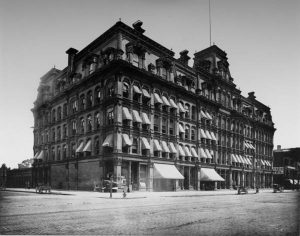
Harold Burton: From Cleveland Mayor to Supreme Court Justice (video)
The link is here
Shaker resident Harold H. Burton was Mayor of Cleveland, U.S. Senator and Associate Justice of the Supreme Court. His father Alfred accompanied Peary to the North Pole and his sister was the children’s author/illustrator Virginia Lee Burton.
Historian Joe Blake explores Burton’s political career and his legacy, including Burton’s tenure as a Republican Mayor during the New Deal, and his Supreme Court appointment just as the Court began to reexamine judicial support for segregation. Cosponsored by the Shaker Historical Society.
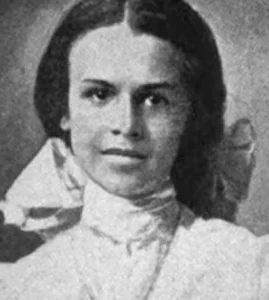
If you haven’t heard about the Black girl who won the first national spelling bee in the U.S. 115 years ago, you’re not alone: even many in her family didn’t know about Marie C. Bolden’s feat until after she died, decades later.
“It’s astounding to me” that she never talked about winning a gold medal in front of thousands of people, Bolden’s grandson, Mark Brown, told NPR.
But back in 1908, Bolden’s victory made national news and upended racist stereotypes, less than 50 years after the Civil War. The 14-year-old did it by being perfect, spelling 500 words flawlessly to lead her hometown team, Cleveland, Ohio, to victory in the city’s then-new Hippodrome Theater.
“She never talked about this award, this amazing accomplishment,” Brown said. “But even Booker T. Washington mentioned [it] in his speeches.”
Boleden’s win was dramatic and unprecedented: Cleveland’s team was trailing in a field that included teams from New Orleans, Pittsburgh and Erie, Pa., near the end of the contest, according to contemporary accounts. But then Bolden vaulted her team to the top prize.
She never showed off the gold medal she won — in fact, her family isn’t sure what became of it — but in interviews after her win, Bolden told reporters she had studied hard for the competition, saying she wanted to help her city win, and that her mother and father wanted her to win.
“When I felt nervous at the Hippodrome, it steadied me to think of these things,” she was quoted telling The Plain Dealer. “I just kind of gritted my teeth and made up my mind that I wouldn’t miss a word.”
It was only after Bolden died that her family realized her place in history. Going through a box of her belongings, Brown says, they found a newspaper clipping from The Plain Dealer relating the story of the Black mail carrier’s daughter who out-spelled hundreds of white kids.
After her stunning victory, Bolden was hailed by “a storm of applause” and congratulations from hundreds of people, including members of the team from New Orleans, according to Indiana’s South Bend Tribune.
Cleveland hosted the spelling contest in June 1908, using it as a marquee event to kick off the National Education Association’s conference. The contest is recognized as the first nationwide spelling bee by Guinness World Records — which also notes Bolden’s role.
The famous Scripps National Spelling Bee, which began in 1925, held its finals this week. Bolden’s accomplishment drew renewed attention in 2021, when Zaila Avant-garde became the first African American to win the Scripps contest.
Bolden’s story then drew the interest of Babbel, the language-learning software company, which contacted Brown after researching his grandmother’s win.
“Her parents and friends helped her memorize words, and she read a newspaper each day to perfect her spelling,” said Malcolm Massey, a language expert at Babbel. “It’s a blueprint for today’s would-be Spelling Bee champions.”
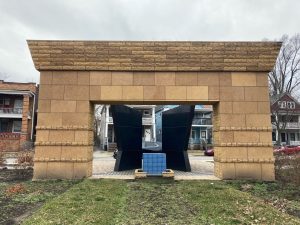
African American Cultural Garden celebrates Juneteenth, adds Civil Rights Trail marker
by Paris Wolfe, Cleveland.com June 14, 2023
The link is here

The City Club of Cleveland’s move to Playhouse Square heralds higher visibility for historic Cleveland institution –
by Steven Litt, Cleveland.com – June 8, 2023
The link is here
CLEVELAND, Ohio — America’s Citadel of Free Speech is getting ready to come down to earth so it can retail big ideas from a storefront on the sunny side of the street.
Those points capture the essence of plans by the 111-year-old City Club of Cleveland to move by September, with a precise date to be determined, from its current home in an upstairs space west of East Ninth Street downtown to the ground floor in a former F.W. Woolworth store at 1317 Euclid Ave. in the heart of Playhouse Square.
“We’re creating a retail civic experience here that is all about access and accessibility,’’ said Dan Moulthrop, the club’s CEO since 2013. “I’m thrilled.”
A non-partisan debate forum and a beloved Cleveland Institution, the club is famous for giving open mics to everyone from Carl Stokes, Robert F. Kennedy, and Barack Obama to Liz Cheney, Karl Rove, and William Barr.
The club’s new home will be the sixth in its history of bouncing around downtown since 1912. And it may be the most important move yet.
For the past 40 years, the club has been the sole tenant on the second floor of the eponymous, 13-story City Club Building, built in 1907 at 850 Euclid Ave. The building faces north from the south side of the avenue, meaning that sunlight has not been a big factor inside the floor occupied by its marquee tenant. Nor was visibility from the street.
Going upstairs at 850 meant punching 2 in the building’s vintage elevators or taking the stairs. Renovated in 1999, the club has always felt welcoming and lively, despite being internally focused and not directly connected to the surrounding city.
At Playhouse Square, the club will be far more visible on the north side of Euclid Avenue inside a new, sidewalk-friendly storefront where it will face south into the sun from behind big glassy windows. It’s a fitting spot for an institution whose mission is “to create conversations of consequence that help democracy thrive.’’
Moulthrop said he’s excited to have a nonprofit organization as the club’s landlord because the relationship could give his organization a new sense of long-term stability in comparison to inhabiting commercial real estate that could change hands.
The club announced its upcoming move to Playhouse Square last December, but Moulthrop shared new renderings and other details about the move recently with cleveland.com and The Plain Dealer.
The new renderings, prepared by the Cleveland office of DLR Group, emphasize the light, airy look of the new space, which has 16-foot-high ceilings and big display windows with curved corners.
“There is something so accessible about this space, which communicates something to the community we’ve never communicated before in our physical presence,’’ Moulthrop said during a walk-through.
Construction workers are now fitting out a 14,600-square-foot space in the club’s new home, with seating for 350, representing a 50% increase in capacity over its current location in the City Club Building at 850 Euclid Avenue, where it has spent the last 40 years.
The square footage will be the same before and after the move, but the club will allocate more of its footprint in its new home to its primary mission — hosting public forums.
Built in 1924, the club’s upcoming new home was designed by the famed Cleveland architecture firm of Walker & Weeks, which also designed Severance Music Center in University Circle, home of the Cleveland Orchestra.
Although it’s just two stories high, the Woolworth building was built with massive, heavily-riveted steel columns designed to carry additional stories above it that never got built.
Those columns are coming in handy now. In order to create a column-free space with clear sightlines inside the club’s bigger new dining room, the DLR architects have decided to remove four of them from the center of the space.
In order to do that, the designers will transfer the structural load to a pair of giant trusses that will be placed on the building’s roof. The trusses will shift the load to other columns at the edge of the club’s dining room that are strong enough to carry extra weight.
The crane lift, scheduled for June 26, should be dramatic. As they raise the trusses into position, operators will need to avoid bashing the big Playhouse Square sign that rests atop the building, overlooking Euclid Avenue.
In recent years, both floors of 1317 Euclid have been occupied by Dwellworks, which provides corporate and individual relocation services for businesses. Dwellworks has consolidated on the upper floor of the building.
In its new home, the City Club will become part of the ongoing story of Playhouse Square, the city’s theater district. Preservationists in the 1970s and ‘80s saved the area’s early 20th-century movie palaces and Vaudeville houses from destruction during the era of urban renewal and white flight.
In order to lure suburbanites downtown, which was then perceived as dangerous, the Playhouse Square Foundation built a large parking garage connected to the theater lobbies from behind, off Dodge Court. Visitors never had to set foot on Euclid Avenue.
Since then, Playhouse Square has assembled and curated a sizable portfolio of real estate around the neighborhood, where it has built a hotel and attracted tenants including restaurants and civic organizations including the United Way and the Greater Cleveland Partnership, Northeast Ohio’s chamber of commerce.
The new City Club address is part of a row of buildings housing branches of Cleveland State University’s Art Gallery; Kent State University’s Cleveland Urban Design Collaborative and graduate programs in urban design and landscape architecture, and Ideastream, Cleveland’s public broadcaster.
Craig Hassall, Playhouse Square’s president and CEO since 2022, called the club a “top drawer’’ addition and said he would consider it an addition to the district’s collection of resident companies, including Great Lakes Theater, the Tri-C JazzFest, the Cleveland International Film Festival, DanceCleveland, and Cleveland Ballet.
“I personally love the fact that the City Club coming into the neighborhood will raise the importance of spoken word events,’’ Hassall said.
The club will add foot traffic and vitality, making Euclid Avenue, “more attractive and welcoming and a place you really want to hang out,” he said.
The club will have an impact on street life starting every Friday in August when it will hold its weekly forum outside on U.S. Bank Plaza, the triangular park between East 13th and East 14th on the south side of Euclid Avenue. Details will be shared on the club’s website,
The City Club’s move will be accompanied by one important change: The organization will not be bringing along its big, 1940 “Free Speech’’ mural by Cleveland artist Elmer Brown, one of the most important Black artists in the city’s history.
Reflecting the club’s racial reality before World War II, Brown painted the mural as a depiction of the club as an all-white institution. A solitary Black man, believed to represent the artist, is included in the image.
Moulthrop called the mural, which measures more than 8 feet high by 21 feet wide, “a product of its time,’’ that no longer communicates “the sense of belonging and inclusion that is at the heart of our work.”
To safeguard the artwork for posterity, the club has donated it to the Western Reserve Historical Society, which is planning to display it alongside information providing historical context.
“We love it, it’s just so much of its time,’’ Dennis Barrie, the veteran museum planner and administrator who serves as vice president of experience design for the historical society, said of the mural.
“I know why places like the City Club need to refresh their approach, but it’s our obligation to understand the past,’’ Barrie said.
The City Club will display a digital reproduction of the mural at its new home in Playhouse Square. Moulthrop said the club wants to acknowledge the mural “as a part of our history while creating a more inclusive space and making room for the stories still to be told.”
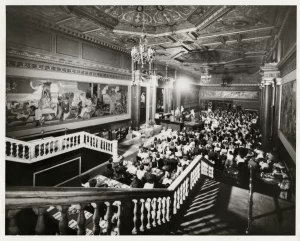
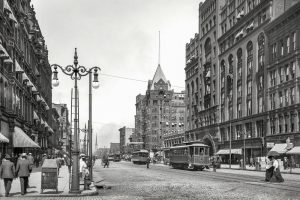
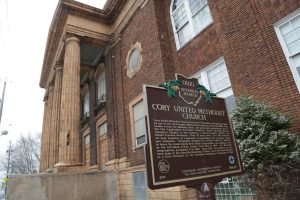
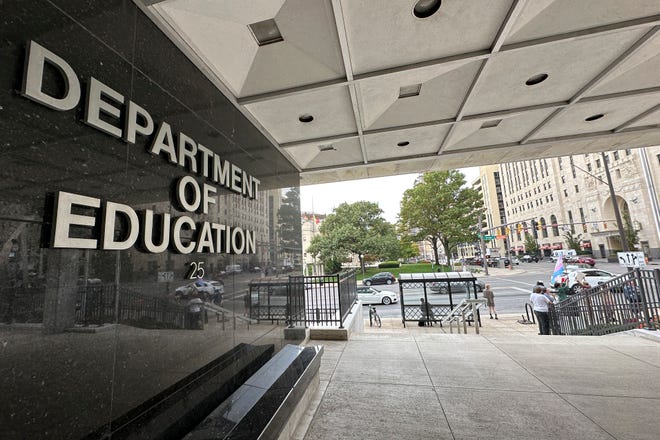
William L. Phillis is a former teacher, principal, superintendent, and assistant superintendent of public instruction. He is currently the executive director of the Ohio Coalition for Equity and Adequacy of School Funding.
Leaders of the Ohio Senate seem to be inebriated with power.
With a super majority, they do what they want. They are in a position with a super majority in both chambers of the legislature, to overpower the Governor’s office if they wish.
Senate Bill 178 would neuter the State Board of Education by transferring most of the duties of the State Board of Education to the Governor’s office. The move is counter to Article VI, Section 4 of the Ohio Constitution.
In 1953 Ohioans, with a constitutional amendment, removed the state education agency from the governor’s office by establishing an independent state board of education.
A history lesson — which some state officials would ignore — is in order.
Ohio did not have a state school officer until 1837, when the legislature enacted the office of superintendent of common schools and employed Samuel Lewis as superintendent. After three years, Lewis resigned, and the legislature repealed the law which established the position.
This guest column is available free: Support the exchange of local and state ideas by subscribing to the Columbus Dispatch.
The Ohio Constitutional Convention of 1850-1851 called for the common school system.
Delegates debated, but ultimately rejecting the idea of establishing in the constitution a state officer for education.
In 1853 however the legislature enacted legislation providing for a state commissioner of common schools to be elected on a three-year cycle. During the constitutional convention of 1912, delegates crafted language to replace the state commissioner of common schools with a superintendent of public instruction.
Ohioans approved the amendment, and the legislature attached the position to the governor’s office.
In 1953, Ohioans passed a constitutional amendment as follows:
There shall be a state board of education which shall be selected in such manner and for such terms as shall be provided by law. There shall be a superintendent of public instruction, who shall be appointed by the state board of education. The respective powers and duties of the board and of the superintendent shall be prescribed by law.(Article VI, Section 4)
Ohioans removed the superintendent of public instruction and thus the state education agency from the governor’s office.
In the 1990’s Governor Voinovich requested the legislature to allow the governor to appoint State Board of Education members as a means to gain control of the state education agency.
The legislature gave Voinovich the authorization to appoint eight members in addition to the eleven elected members. This action paved the way for a dysfunctional environment that continues to this day.
State officials should restore the state board to an all-elected body to regain the credibility and the respect the state board had from 1956 to the Voinovich era.
The people of Ohio passed the 1953 amendment to make the state board of education a fourth branch of government.
Senate Bill 178 would thwart the will of Ohioans. But that does not matter to some current state political leadership.
The redistricting fiasco is another proof that the will of the people is of no concern to some current state officials.
Senate Bill 178 should be ditched.
William L. Phillis is a former teacher, principal, superintendent, and assistant superintendent of public instruction. He is currently the executive director of the Ohio Coalition for Equity and Adequacy of School Funding.